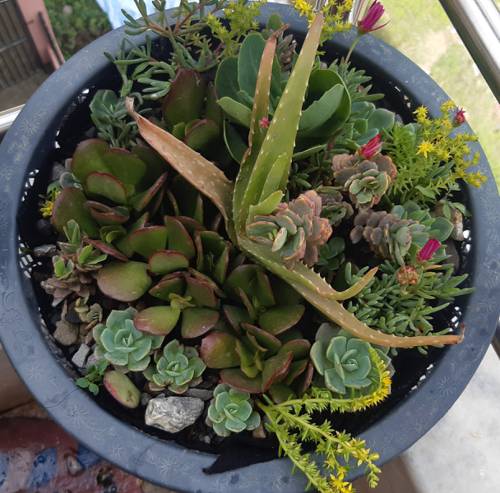
FAQ About Indoor Plant Temperature Variance Tolerance

What is indoor plant temperature variance tolerance?
Indoor plant temperature variance tolerance refers to the range of temperatures that an indoor plant can endure without experiencing stress or damage. Different plant species have different tolerance ranges, which can affect their growth, health, and ability to thrive. Managing temperature within these ranges is crucial for maintaining healthy plants indoors.

Why is temperature important for indoor plants?
Temperature affects the metabolism, growth, and overall health of indoor plants. It influences processes such as photosynthesis, respiration, and transpiration, which are vital for plant survival. Keeping indoor temperatures within a plant's tolerance range is essential to prevent stress, disease, or even death.

What are typical temperature ranges for indoor plants?
Most indoor plants thrive in temperatures ranging from 60°F to 75°F (15°C to 24°C) during the day, and slightly cooler temperatures at night. However, this can vary widely depending on the plant species. Some tropical plants prefer warmer conditions, while temperate plants may tolerate cooler temperatures.

How does temperature fluctuation affect indoor plants?
Temperature fluctuations can cause stress to indoor plants. Rapid changes can affect the plant's metabolic processes, potentially leading to issues such as wilting, leaf drop, and reduced growth. Consistent temperature management helps in maintaining healthy plant growth.

Can indoor plants survive in colder temperatures?
Many indoor plants can tolerate mild cooler temperatures for short periods, but prolonged exposure can lead to damage. Cold temperatures can slow down growth, cause leaves to curl or drop, and in severe cases, kill the plant. Selecting plants with suitable cold tolerance is important for cooler environments.

How can I monitor the temperature for my indoor plants?
Using a digital thermometer or thermostat can help monitor the temperature around your indoor plants. Placing the thermometer near the plants provides an accurate reading of their immediate environment. Smart thermostats and temperature sensors can also help in maintaining consistent conditions.

What are signs that an indoor plant is stressed by temperature?
Signs of temperature stress in indoor plants include wilting, leaf drop, scorched leaves, or stunted growth. If plants display these symptoms, it may indicate that the temperature is too high or low for them, necessitating adjustments in their environment.

How can I protect indoor plants from extreme temperature changes?
To protect indoor plants from extreme temperature changes, avoid placing them near heat sources like radiators or cold drafts from windows. Insulating windows, using curtains, and placing plants in stable environments can prevent sudden temperature changes. Humidifiers and fans can also help control the temperature around the plants.

Do indoor plants need different temperatures in summer and winter?
Yes, indoor plants often experience different growing conditions in summer and winter. While they generally prefer stable environments, some plants may benefit from slight temperature drops at night during winter to mimic natural seasonal changes. Always check the specific requirements for each plant.

Can the use of artificial lighting affect indoor plant temperature tolerance?
Artificial lighting, such as grow lights, can increase the temperature around indoor plants, which may affect their tolerance levels. It's important to ensure these lights are dimmable or positioned in a way that doesn't overheat the plants, particularly in confined spaces.

What temperature fluctuations should I avoid for indoor plants?
Avoid fluctuations greater than 10°F (about 5°C) within a 24-hour period, as this can stress many indoor plants. Consistency is key, as plants thrive in stable environments. Sudden spikes or drops in temperature can negatively impact their health.

Are there specific indoor plants that are more tolerant to temperature variance?
Yes, some indoor plants are more tolerant of temperature variance than others. Cast iron plant, snake plant, and ZZ plant are examples of species that can handle a wider range of temperatures, making them ideal for fluctuating conditions.

How do humidity levels interact with temperature variance for indoor plants?
Humidity levels play a significant role in conjunction with temperature variance for indoor plants. High temperatures combined with low humidity can cause plants to lose moisture rapidly, while adequate humidity can help mitigate the effects of temperature fluctuations by maintaining moisture levels.

What role does soil play in managing temperature variance for indoor plants?
Soil can act as an insulator, helping to buffer temperature changes for roots. Ensuring well-draining, but moisture-retentive soil can protect plants during temperature fluctuations by maintaining a more consistent microenvironment around the roots.

How can I adjust my plant care routine for changing indoor temperatures?
Adjusting care routines involves modifying watering schedules, light exposure, and even fertilization based on temperature changes. For example, in warmer conditions, more frequent watering might be necessary, while reducing it during cooler periods. Monitoring each plant’s specific needs helps tailor these adjustments.

Can air conditioning or heating systems impact indoor plant temperature tolerance?
Yes, air conditioning and heating systems can significantly affect indoor plant temperatures, sometimes causing stress. Direct airflow from these systems can lead to temperature extremes and decreased humidity, which may harm the plants if not properly managed.

How do I know if my indoor plant's temperature needs have been met?
Healthy growth, vibrant leaves, and the absence of stress signs like wilting or leaf discoloration typically indicate that an indoor plant's temperature needs are being met. Observing your plants regularly will help you identify any issues early.

Is it possible to acclimate indoor plants to a wider temperature range?
Yes, gradually exposing indoor plants to slight variations can help acclimate them to a wider temperature range. Begin with small changes, providing time for the plants to adjust. This can enhance their resilience to fluctuations in the long term.

When should I be particularly cautious about temperature variance for indoor plants?
Be especially cautious during seasonal transitions, such as moving into or out of winter and summer. These times often bring drastic temperature changes indoors. Ensure your plants are positioned correctly and any necessary adjustments to their environment are made to prevent stress.

What kinds of environmental setups reduce the impact of temperature variance on indoor plants?
Creating an indoor garden or using plant terrariums can help maintain more consistent temperatures. Grouping plants together, using temperature-regulating devices like heaters or coolers, and implementing reflective layers also help create a stable environment, reducing the impact of temperature variance.
